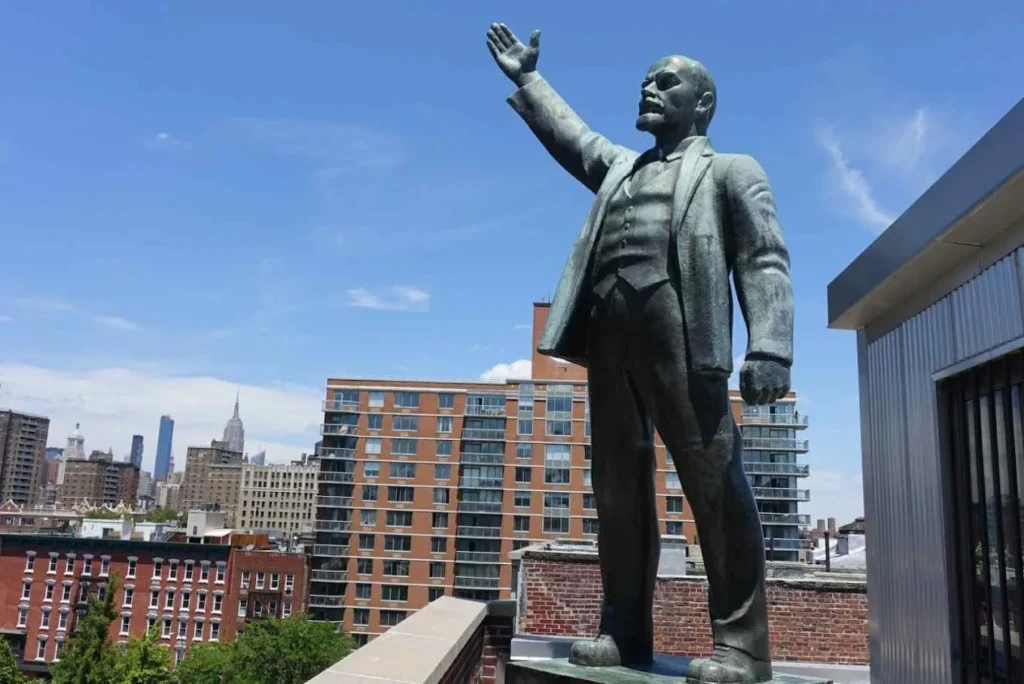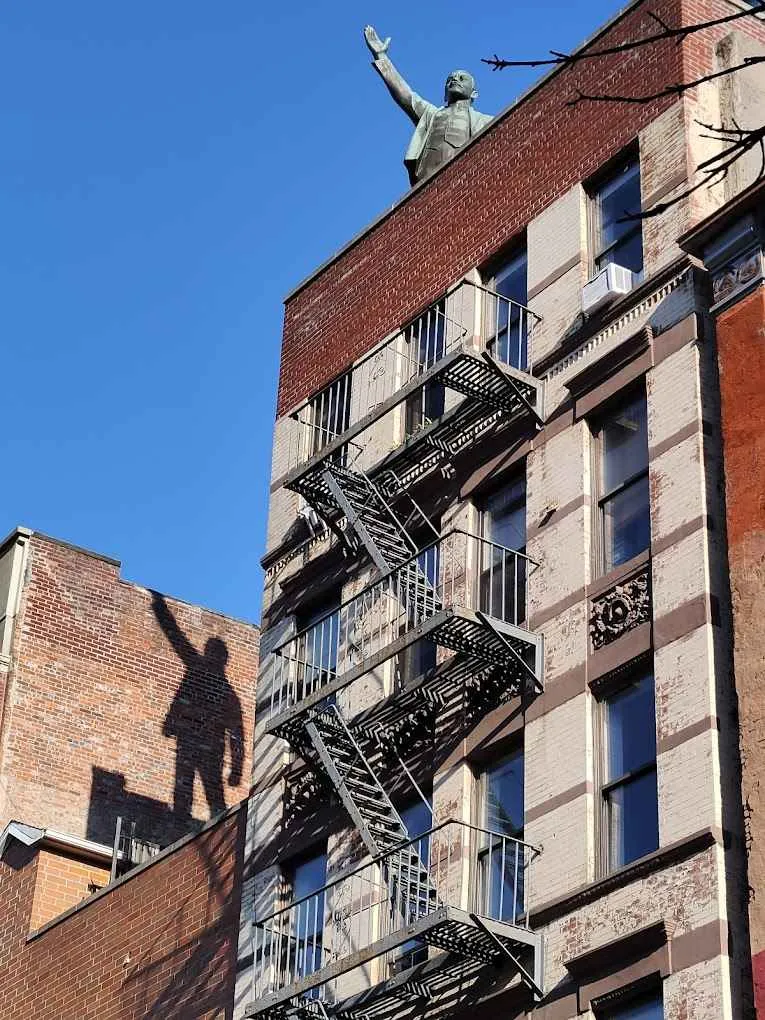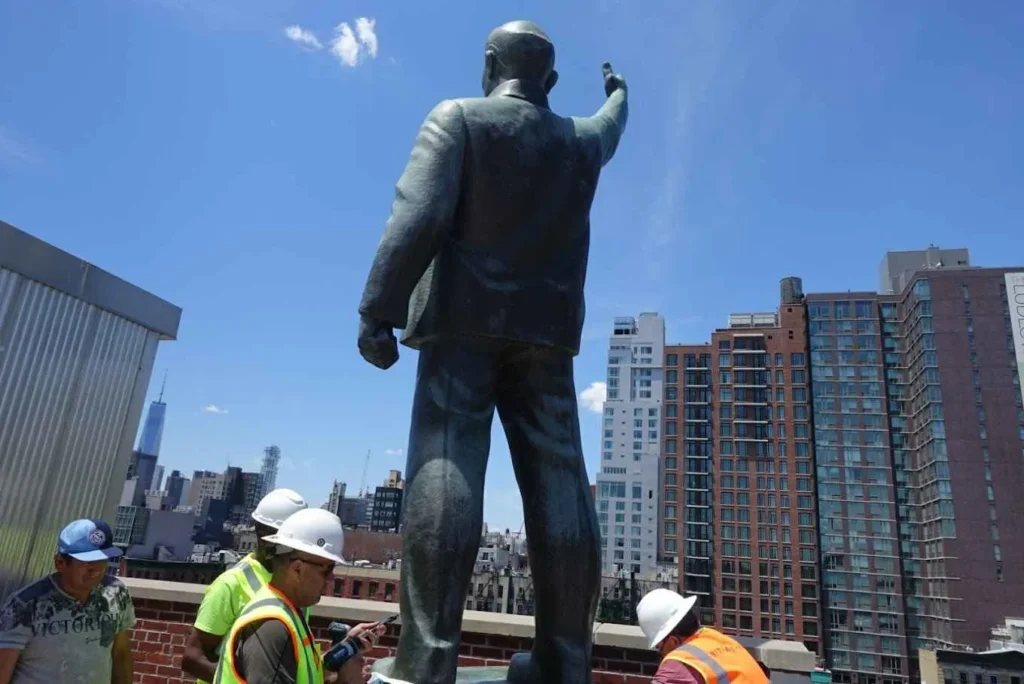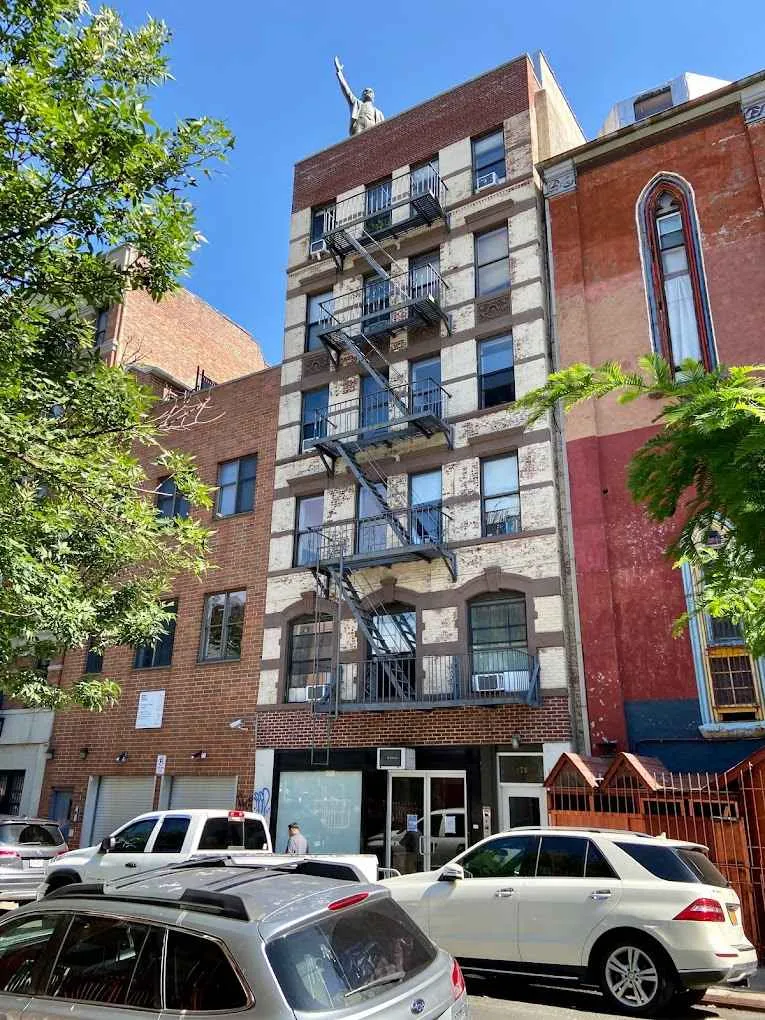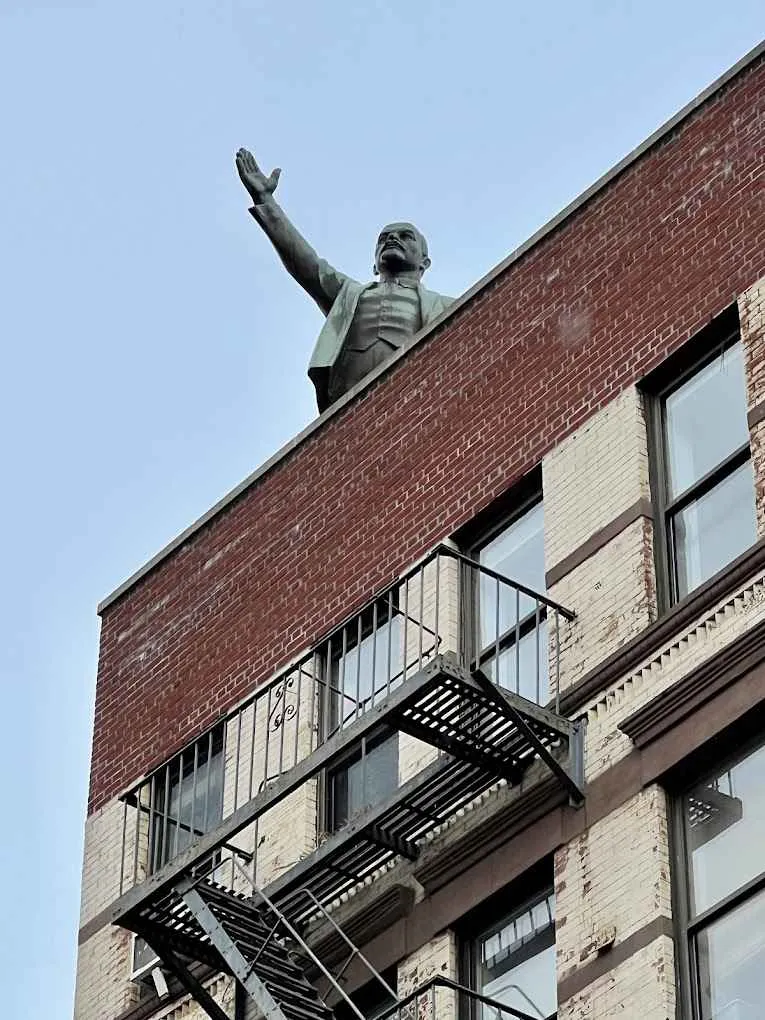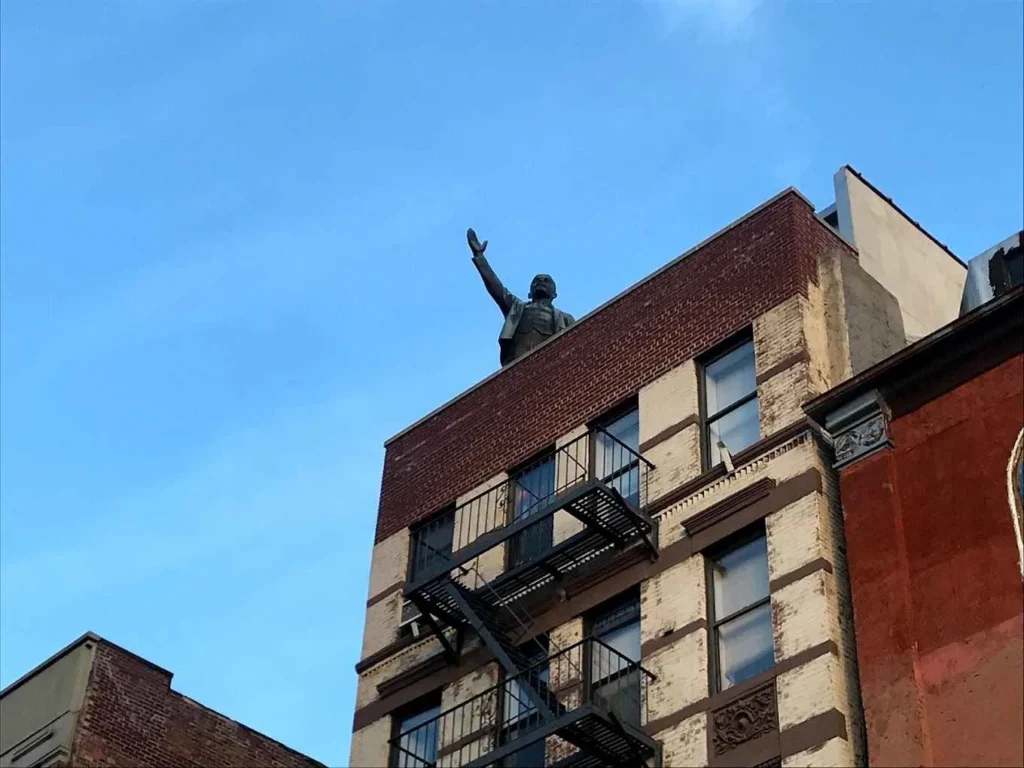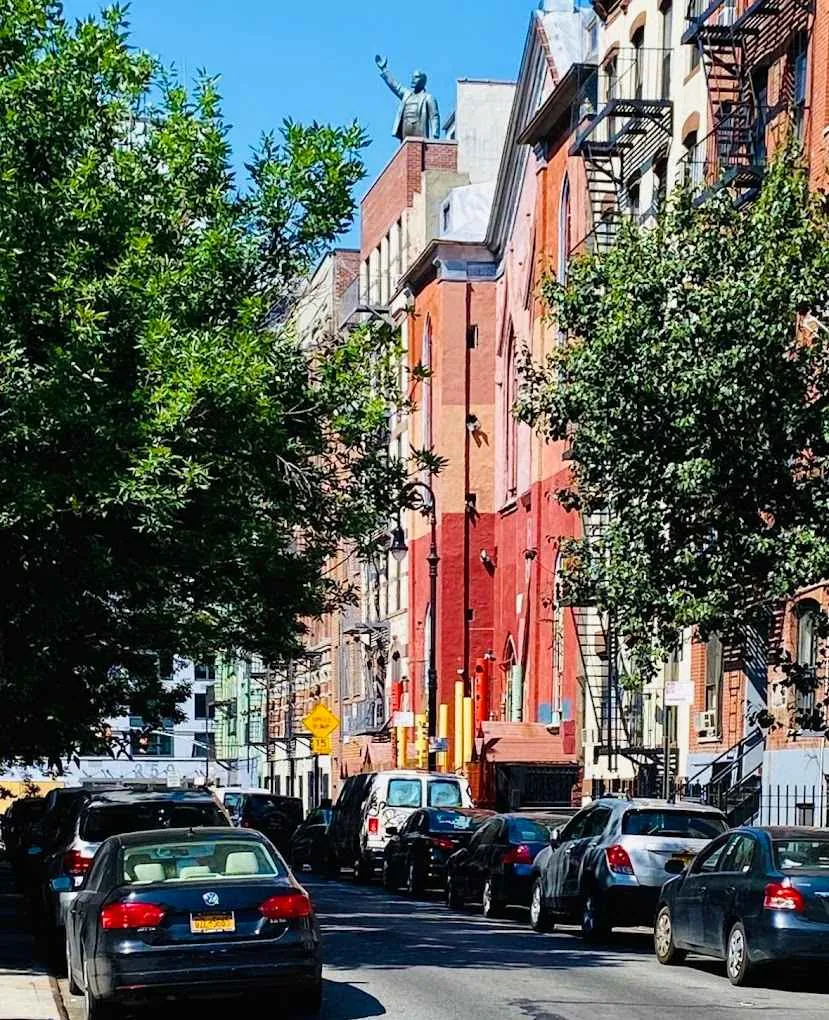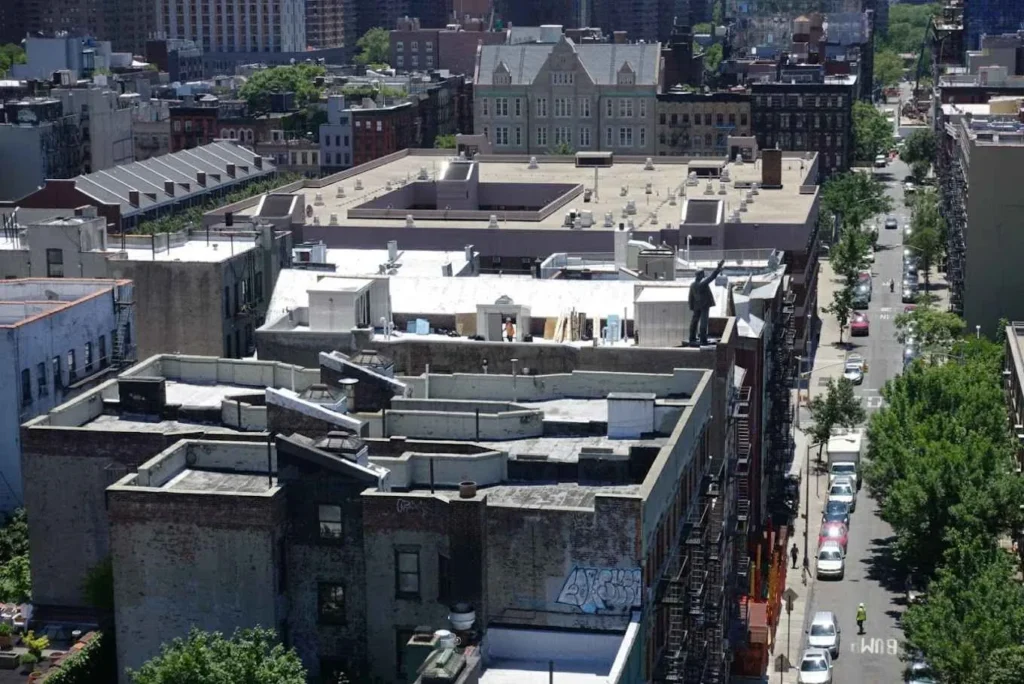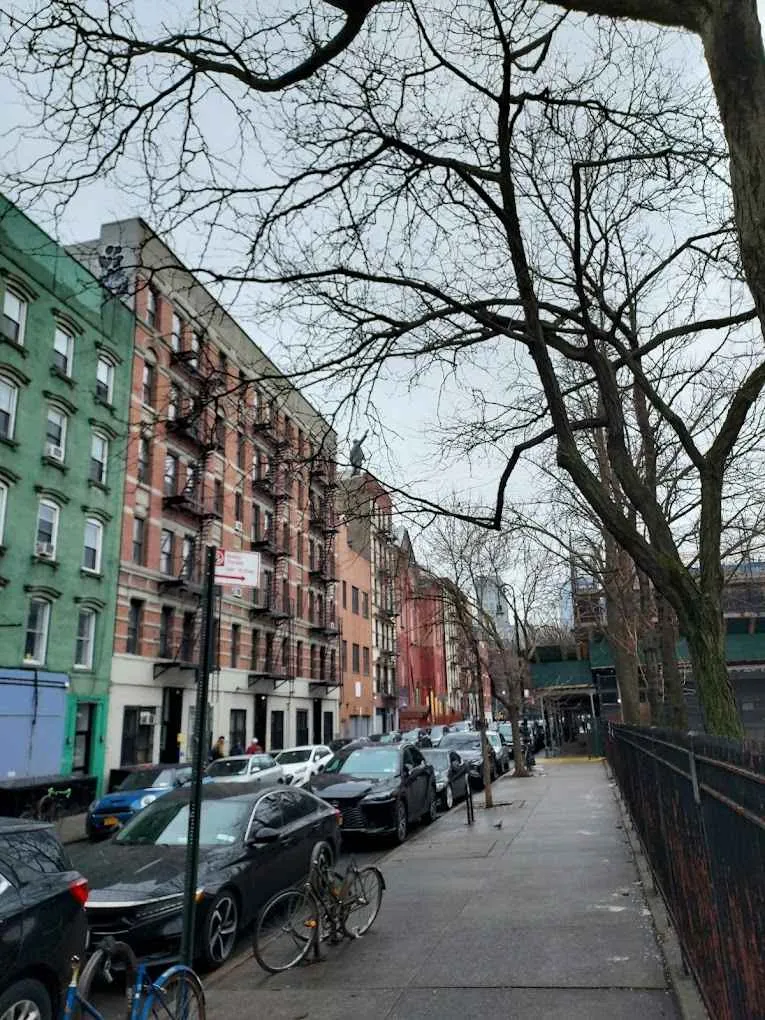If you find yourself in the Lower East Side on Norfolk Street between Stanton and Houston, a curious sight awaits you atop a building—a statue of the Communist leader Vladimir Lenin. But why is Lenin perched on a rooftop in this iconic New York City neighborhood?
The Origins of Red Square
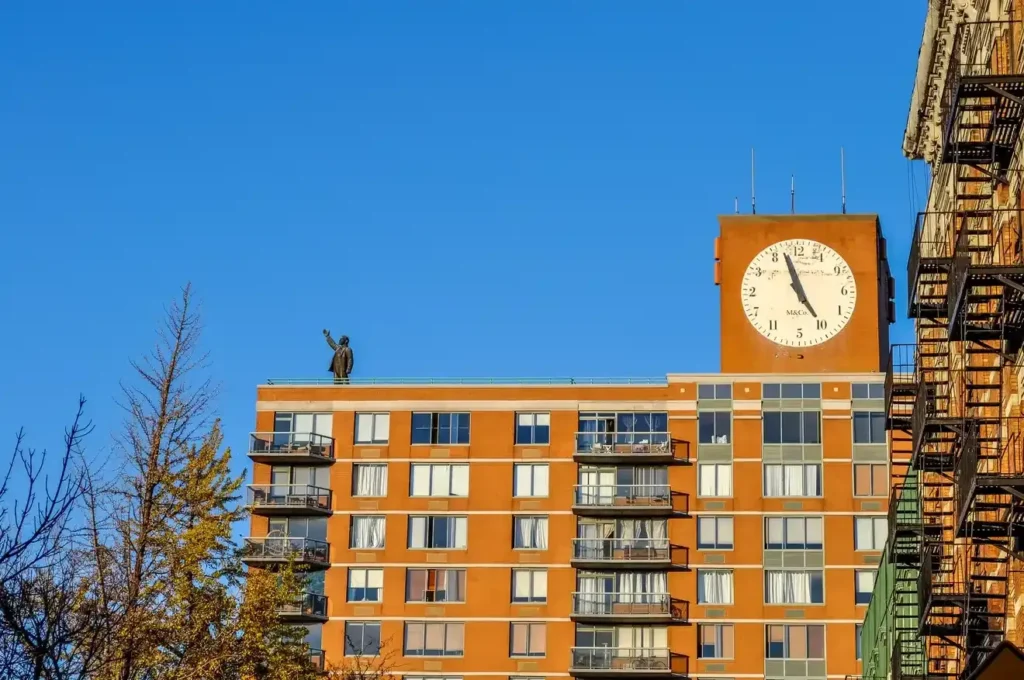
In 1989, developers Michael Rosen and Michael Shaoul unveiled the Red Square, a large-scale apartment complex located at 250 East Houston Street. This development was one of the first major private projects in the East Village, signaling the onset of gentrification in the area.
Discovering Lenin
In 1994, Rosen and Shaoul stumbled upon a discarded Lenin statue in a backyard just outside Moscow. Sculpted by Yuri Gorasimov and commissioned by the Soviet Union in the early 1980s, the statue had never been unveiled due to the collapse of the USSR. Seizing the opportunity, the developers brought the statue to New York and placed it atop the Red Square building.
A Symbolic Gesture
According to Rosen, the Lenin statue was intended as a tribute to the Lower East Side’s rich history of political activism. Facing south with an outstretched arm, it also served as a subtle nod to Wall Street and its capitalist influence.
Rosen acknowledged the irony of his development project, recognizing the contrast between the building’s expensive rental rates and the neighborhood’s traditionally affordable housing. He noted, “We were building a building that was going to be rented at rates that were not otherwise affordable in the neighborhood.”
A New Home for Lenin
The statue remained atop Red Square until September 19, 2016, when the building was sold to a developer for $100 million. In 2017, Lenin found a new home on the rooftop of 178 Norfolk Street. In March 2022, the statue was illuminated in yellow and blue as a show of support for Ukraine.
Today, the Lenin statue continues to stand as an unofficial landmark of the Lower East Side, embodying the area’s unique blend of political history, artistic expression, and urban transformation.
